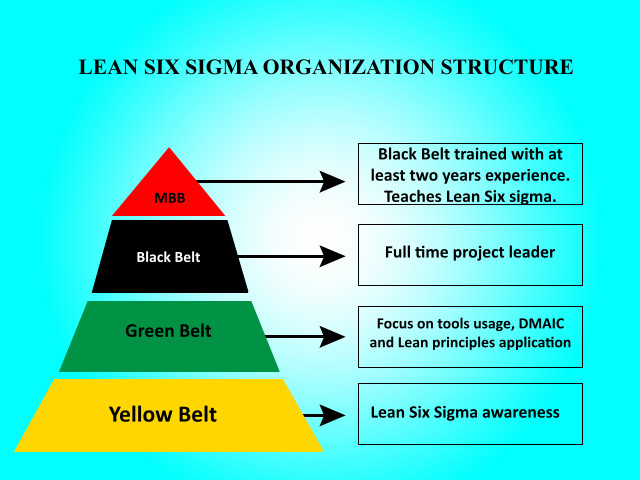Business Benefits of Getting Six Sigma Certified

Megan R. Nichols,
Freelance Technical Writer
Six Sigma certifications have been around for more than 30 years, first being put into practice by Motorola in 1986. It has become so popular that many companies have started to adopt this methodology. What is the Six Sigma methodology, and what are the benefits both for the business and for individuals of getting Six Sigma certified?
The Six Sigma Methodology
The Six Sigma method is a type of lean manufacturing, with some distinct differences. Lean manufacturing focuses almost exclusively on waste reduction while Six Sigma focuses on variation reduction. Six Sigma practices also tend to include more technical tools, like data analysis and hypnosis tests, instead of less technical options like visual controls.
The goal is the same, and many companies will implement a lean manufacturing model before transitioning to a Six Sigma model.
A Six Sigma program isn't something that can be adopted overnight — it will take time and additional training for all involved. What are the benefits of choosing this kind of methodology?
Six Sigma Certification Levels
There are six levels of Six Sigma certification, labeled similar to martial arts achievement belts: white, yellow, green, brown, black and master black, in order of certification level. Brown belts aren't often used, but they can be utilized to classify an individual with a green belt who has passed their exam to become a black belt but hasn't completed a second Six Sigma project.
There are also two additional positions in a Six Sigma hierarchy:
• Champions: Champions act as liaisons, helping to translate the mission of the Six Sigma method within the colony.
• Executives: Executives provide the foundation for the program by establishing a strategic focus.
Benefits of Six Sigma Certification
How can businesses and individuals benefit from Six Sigma certifications?
On a broad scale, having individuals in business with these certifications can help eliminate costly errors that can occur along every step of the production process. A Six Sigma certification gives someone the tools to identify and fix these errors before they become a problem. These errors can result in a loss of customer satisfaction, lost business contractors or even a failed company if they're allowed to continue uncorrected.
Six Sigma certifications also help to build and sustain quality improvement and reduce waste. This is where lean manufacturing and Six Sigma go hand in hand, though lean manufacturing predates Six Sigma by nearly 100 years. It was introduced in the late 1800s as part of the industrial revolution, while Six Sigma didn't make an appearance until 1986.
The standards of Six Sigma certifications are stringent, which enables companies to use them to ensure compliance across all facets of the manufacturing process. Six Sigma professionals can position themselves in such a way that they can ensure compliance throughout the process, regardless of factors like employee turnover. It also opens up doors for many opportunities in leadership and managerial positions.
The standards of Six Sigma certifications are stringent, which enables companies to use them to ensure compliance across all facets of the manufacturing process. Six Sigma professionals can position themselves in such a way that they can ensure compliance throughout the process, regardless of factors like employee turnover. It also opens up doors for many opportunities in leadership and managerial positions.
On an individual level, Six Sigma certifications are not limited to the industry that you're working in when you achieve them. You can apply them to a variety of sectors in many different positions, making them one of the most versatile certifications you can obtain during your career.
These certifications can also increase your salary, with your annual take-home pay increasing with each level you achieve. A person with a yellow belt certification can make anywhere from $40,000 to 70,000 a year, while green belt salaries range between $50,000 and $98,000 annually and black belts can expect to earn anywhere from $62,000 to $118,000 a year.
A Six Sigma certification can also improve the probability that you will obtain a new position when you're looking to change careers. An individual with any one of these belts, as well as a history of ongoing education, is much more attractive on a job application than someone without those qualifications.
The benefits of obtaining one or more levels of Six Sigma certification are almost too varied to count. In essence, these belts can help you build your career and improve the future of the company you work for by eliminating errors and creating and sustaining quality improvements. It can also be a useful launching pad if you want to change careers since these certifications can be used in nearly any industry.

Subscribe to Industry Era
News
This Apple Watch Case Could Kill All of Those Wannabe AI Devices
Google defends AI search results after they told us to put glue on pizza
Google scales back AI search answers after it told users to eat glue
FAA won't approve increased 737 Max production in near future
Thursday was a sour day for the US economy — with an important silver lining
OPEC+ working on complex production cut deal for 2024-2025, sources say
Stock futures inch lower as investors review earnings, brace for inflation report: Live updates
Salesforce Shares Plunge by Most Since 2008 After Weak Outlook
Jeep’s Wagoneer S Trailhawk concept teases a fully electric off-roader
Gap’s stock jumps 23% as the retailer swings to profit and raises guidance
Medline recalls 1.5 million bed rails linked to deaths of 2 women
Oil falls as Fed policymakers look to maintain rate cuts, gasoline stocks rise










